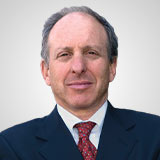Recent yields may offer a decent clue to bond fund returns over the next decade, writes Daniel Wiener of The Independent Adviser for Vanguard Investors.
Difficult to see. Always in motion is the future.
—Yoda
Can the yield on a bond fund accurately predict how that fund will perform over the next five to ten years? Some, including one of Vanguard's bond pros, say it can.
It's an interesting theory, and one that I've heard repeated a number of times over the years, most recently in a live Webcast that Vanguard hosted near the end of January.
During the course of the discussion, Christopher Alwine, who manages the Vanguard Long-Term Tax-Exempt (VWLTX) and High-Yield Tax-Exempt (VWAHX) funds, mentioned in passing that a bond fund's current yield gives the "best estimate" of what you can expect it to return over the next five years.
This reminded me of a similar theory that Vanguard founder Jack Bogle has mentioned a number of times, which posits that a bond fund's yield is an excellent proxy for its return over the following ten years.
Since any investor would love to have a crystal ball in which to divine the future of his or her investments, I thought I'd investigate these theories and see if they hold up against real-world returns.
To test Bogle's and Alwine's assertions, I looked at month-end SEC yields for all of Vanguard's bond funds from November 1993 to January 2006, as well as the subsequent five- and ten-year returns for those funds. Simple subtraction (the return minus the yield) gives a fairly good idea of just how close a fund's yield comes to predicting its future return.
With enough historical data to look at 87 different ten-year periods and 147 different five-year periods for a majority of Vanguard's bond funds (some are too young), I think it's possible to come to some preliminary conclusions, at least. I should note that in all cases except one (High-Yield Corporate (VWEAX)) the absolute yield and return numbers are in the mid-to-low single digits, so even 0.5% can be a pretty big difference.
What you'll see in the summary at the bottom is that Bogle is probably closer to being right than Alwine. Obviously, a bond fund's yield won't be a perfect crystal ball on the future, but the wider gap between the range of outcomes over five years versus those over ten years gives Bogle's back-of-the-envelope calculation a bit more validity.
This general rule that a fund's yield will predict its ten-year return far better than its five-year return seems to hold throughout the taxable and tax-exempt funds. The one other general observation is that, on average, the five-year returns were almost all slightly higher than the funds' yields would have suggested—though, given the range of possible outcomes, it's questionable whether this would satisfy an investor who happened to hit one of the periods when returns were significantly lower than predicted.
One last thing: Funds like Inflation-Protected Securities (VIPSX) and High-Yield Corporate are somewhat different kettles of fish, and shouldn't be held to the same standard. In fact, as you can see, using those funds' yields to predict five- and ten-year returns can leave you pretty darned wide of the mark.
NEXT: Rising Rates Have Silver Lining
|pagebreak|Rising Rates Have Silver Lining
While it might seem a bit counterintuitive, since rising interest rates hurt bond (and bond fund) prices, it turns out that rising interest-rate environments are periods when bond fund investors actually do a little better than their starting yield would suggest.
Although I don't have lots of data to support this, given the long bond bull market (when rates have generally been going down, down, down), it appears that rising yields—and fund managers who capture those yields as new cash flows come into their funds or they trade into higher-yielding securities—can add some return over a ten-year period.
I took a look at the period from November 1993 through November 1994, when yields were on a rapid ascent. Investors buying Vanguard's bond funds at this time earned ten-year returns that were, on average, anywhere from 0.2% to 1.6% higher than their starting yields, and five-year returns that were anywhere from 0.6% to 3.4% higher.
So, you could make the case that buying a bond fund today will generate a return slightly higher than today's yield. Investors in some of Vanguard's investment-grade funds, in particular, could be quite pleased down the road if historical relationships hold and interest rates continue to rise.
I can't recommend buying into a bond fund today based solely on the SEC yields, but it seems like Bogle's take on the theory does hold some water. At best, a fund's yield may give you a foggy glimpse at future possibilities, if not the clear image we all might desire.
Subscribe to The Independent Adviser for Vanguard Investors here...
Related Reading:




















